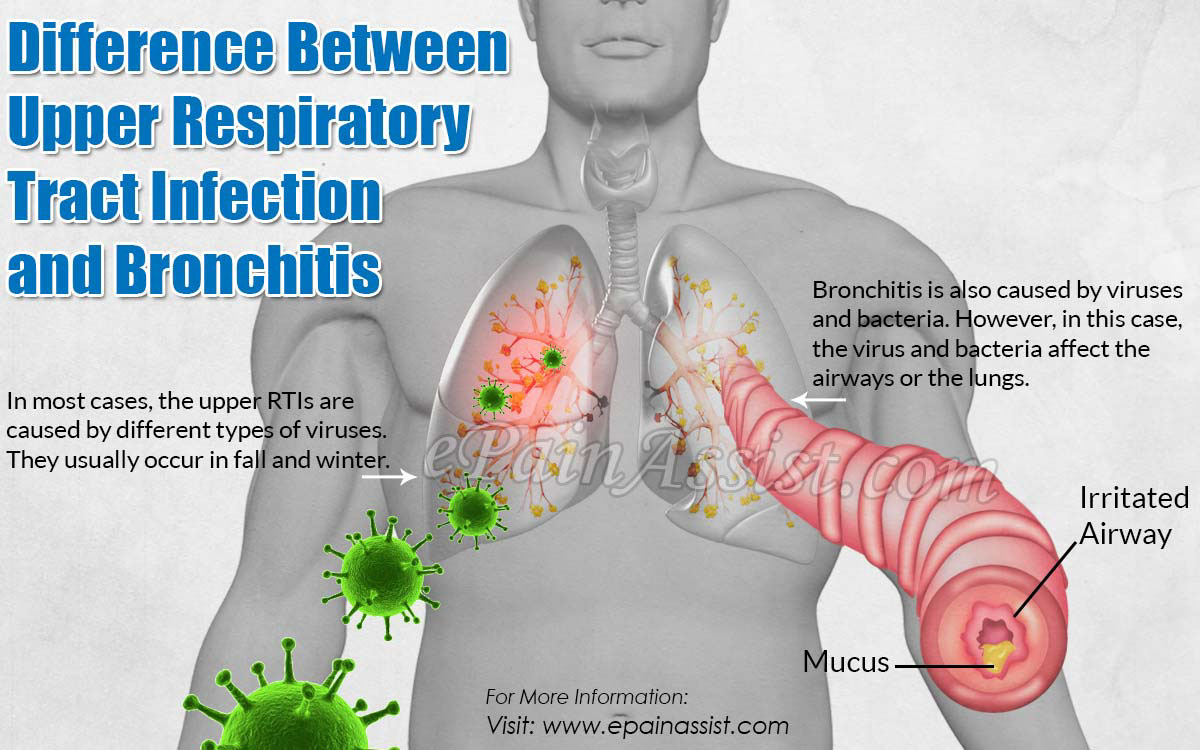Respiratory tract infections are quite common and most of the doctor visits worldwide happen due to this. However, there is confusion between the upper and lower respiratory tract infections and most people mistake one to be another. But, they are different and thereby, require different treatments.
About the Respiratory Tracts
The respiratory tract can be categorised into two sections, based on anatomy –
Upper Respiratory Tract:
This consists of the nose, mouth, sinus, throat, the trachea or windpipe and the larynx or the voice box. The common cold is the type of medical problem or infection that is caused to the upper respiratory tract. Along with that, the upper respiratory tract infections (RTI) can also be sinusitis, tonsillitis, laryngitis or flu.
Lower Respiratory Tract:
The lower respiratory tract is made up of the bronchial tubes and the lungs. More severe medical conditions take place when the lower respiratory tract is infected and the conditions are pneumonia, bronchitis, bronchiolitis and tuberculosis.

Difference Between Upper Respiratory Tract Infection and Bronchitis in Terms of Location of Infection
Upper Respiratory Tract Infections:
In most cases, the upper RTIs are caused by different types of viruses. They usually occur in fall and winter. However, they can occur at any time of the year. These infections take place when some sort of virus or bacteria (different virus or bacteria can cause different types of infections of the upper respiratory tract) invade the upper respiratory tract mucus membrane. The virus or bacteria have to go past many obstacles such as the physical barrier of the hair lining in the nose or the cilia (small hair like structure in the trachea lining) as well as the immunological barriers in which the foreign invaders are constantly resisted by the antibodies produced by the lymph nodes.
Still, the virus and bacteria sometimes manage to survive by changing their shape, chemical mechanism and adapt to the surrounding to resist the destructive measures taken by the body. They then produce toxins that act against the defence system of the body, causing infections. Once they enter the body, these virus and bacteria need an incubation time, only after which can the symptoms of the infection be identified.
Upper Respiratory Tract Infections are contagious – in simple words, you “catch” cold. When you come in contact with someone, who already is suffering from cold or has an upper respiratory tract infection, you have a chance of being exposed to the infection causing virus or bacteria by shaking hands with that person, by using things that the person has been using (such as pen, credit card or even money) etc. In many cases, these virus and bacteria can survive even in open surfaces such as toilet seats.
Bronchitis:
Bronchitis is also caused by viruses and bacteria. However, in this case, the virus and bacteria affect the airways or the lungs. When the airways are infected, it is known as bronchitis, when the lungs are infected, it is known as pneumonia. However, when small children below the age of two have infection in the small airways, it is referred to as bronchiolitis and a more serious type of lung infection is called tuberculosis.
So, it can well be said that the cause of infection for both the cases – upper and lower respiratory tract is virus or bacteria. However, it is the location of the infection or the affected area that determines, whether the infection is an upper respiratory tract infection or a lower one.
Difference Between Upper Respiratory Tract Infection and Bronchitis in Terms of Symptoms
Apart from the location of the symptoms of infection, the difference between an upper respiratory tract infection and bronchitis can be understood by the severity of the symptoms. Infections of the upper respiratory tract have mild symptoms such as –
- Runny nose
- Thick mucus secretion from the nose
- Blocked nose or sinus
- Sneezing
- Sore throat
- Headache
- Cough
- Mild fever.
Symptoms of bronchitis on the other hand would be more serious.
- Cough – coughing is a prominent symptom of lower RTI
- Producing sputum or mucus with cough – the sputum can be white, clear, yellowish green or yellowish grey in colour
- Discomfort in chest
- Shortness of breath
- Fatigue
- Slight fever
- Chills.
Unlike the upper respiratory tract infection, in case of bronchitis, the symptoms will last for weeks and they would be severe. Nagging cough is the most prominent symptom. Bronchitis can last for up to three months if it is chronic and may recur for about two consecutive years. So, if your cough lasts longer than 3 weeks or if you are having high fever or if you are not being able to sleep at night, it is time to see a doctor. The bronchitis viruses cannot be killed with antibiotics, so there is no use of that. The doctor will give you medicines to ease your cough and also breathing exercises that will help you to sleep at night.
Also Read:
- Bacterial Bronchitis: Causes, Symptoms, Risk Factors, Investigations, Treatment, Preventive Therapy
- Viral Bronchitis: Causes, Symptoms, Investigations, Treatment, Preventative Measures
- Acute Bronchitis: Causes, Symptoms, Diagnosis, Treatment, Prevention
- Bronchiectasis: Causes, Symptoms, Diagnosis, Treatment, Prevention
- Bronchiolitis: Causes, Who is at Risk, Symptoms, Treatment, Home Remedies, Prevention
- What is Upper Respiratory Tract Infection: Causes, Symptoms
- Diagnosis, Treatment of Upper Respiratory Tract Infection & its Prevention
- Prevention of Bronchitis in Children & its Home Remedies
